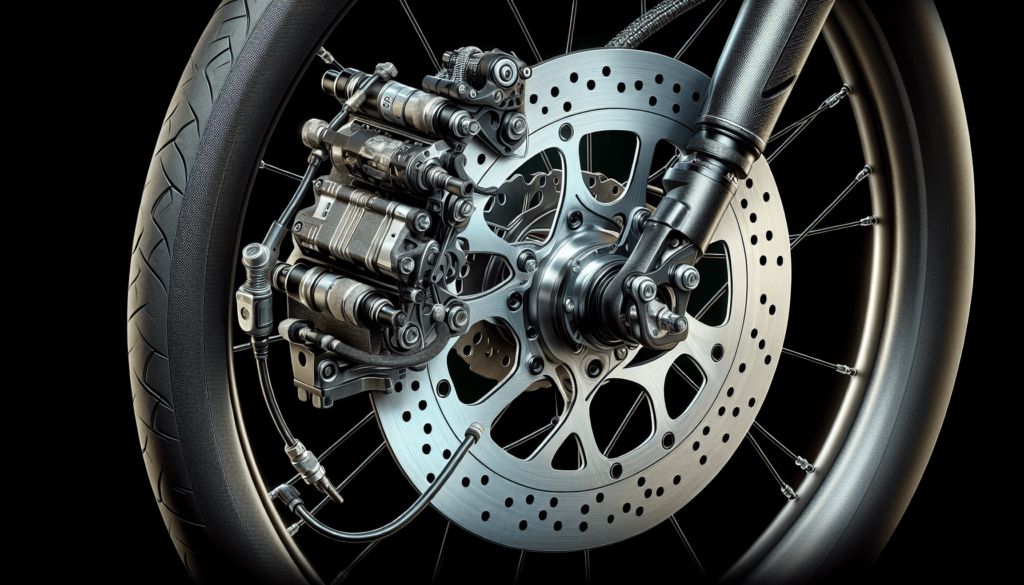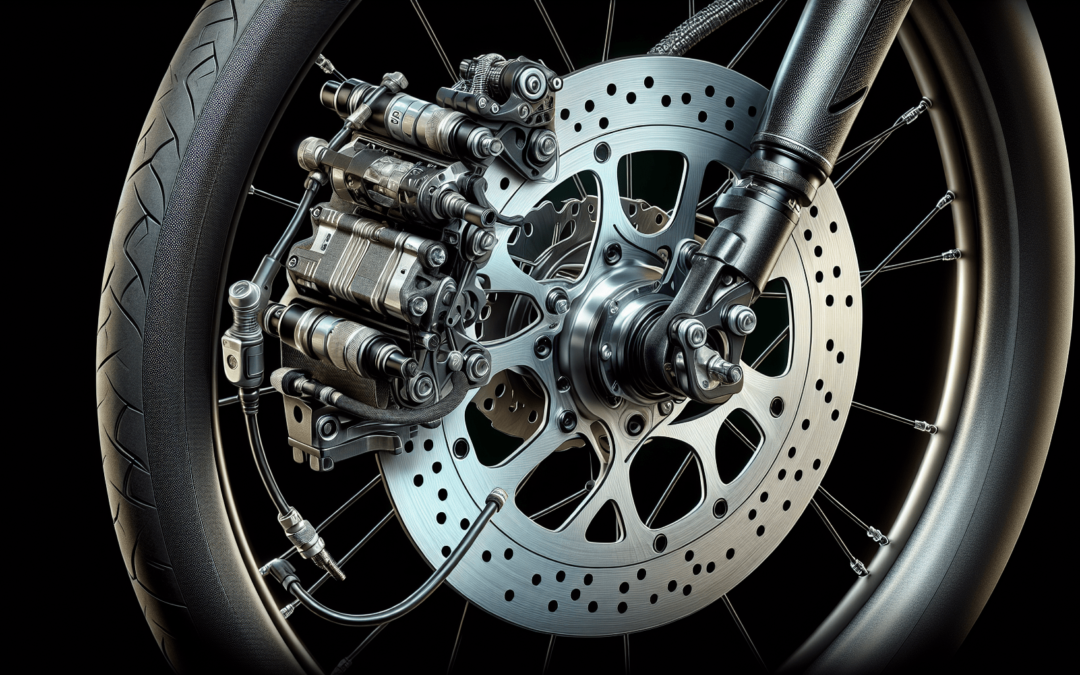You may love the thrill and convenience of riding your electric bike, but nothing ruins the joy more than the annoying screeching from your brakes. Luckily, there’s no need to panic or rush to the nearest repair shop. In this article, you’ll discover simple and effective methods to fix those squeaky brakes on your electric bike. So grab your tools, put on a friendly smile, and let’s get your brakes quiet and smooth again.

Check the Brake Pads
Inspect the Brake Pads
The first step in fixing squeaky brakes on your electric bike is to inspect the brake pads. Over time, brake pads can wear down and become uneven, causing them to make noise when they come into contact with the rotors. Take a close look at the brake pads and check for any signs of wear or damage. If the brake pads are significantly worn or have any cracks, it’s time to replace them.
Clean the Brake Pads
Sometimes, the cause of squeaky brakes can be dirt or debris that has accumulated on the brake pads. In this case, cleaning the brake pads can help eliminate the noise. Gently remove the brake pads from the caliper and use a clean cloth or brush to wipe away any dirt or grime. Make sure to also clean the brake caliper itself to ensure optimal performance. Once the brake pads are clean, reassemble them back into the caliper.
Check the Rotors
Inspect the Rotors
In addition to the brake pads, it’s important to inspect the rotors for any signs of wear or damage. The rotors are the metal discs that the brake pads press against to stop the bike. Over time, the rotors can become warped or develop grooves, which can contribute to noisy brakes. Inspect the rotors closely and look for any uneven surfaces or deep grooves. If you notice any significant damage, it may be necessary to replace the rotors.
Clean the Rotors
Similar to the brake pads, dirty or contaminated rotors can also cause squeaky brakes. Use a clean cloth or paper towel to wipe down the rotors and remove any dirt or debris. Avoid using harsh chemicals or abrasive materials that could damage the rotors. Cleaning the rotors regularly can help maintain their performance and reduce brake noise.
Adjust the Brake Pads
Loosen the Brake Pads
If your brake pads are properly aligned with the rotors but still making noise, adjusting their position may solve the issue. Loosen the brake pad mounting bolt using the appropriate tool, typically an Allen wrench, to allow for adjustment. This will allow you to move the brake pads closer to or further away from the rotor as needed.
Align the Brake Pads
Once the brake pads are loosened, you can align them properly with the rotors. Gently squeeze the brake lever to center the brake pads on the rotor. While holding the brake lever, tighten the mounting bolt back up to secure the position of the brake pads. Make sure the brake pads are evenly spaced on both sides of the rotor for optimal braking performance and minimal noise.
Replace the Brake Pads
Remove the Old Brake Pads
If your brake pads are significantly worn or damaged, it’s time to replace them. Start by removing the old brake pads from the caliper. This can usually be done by loosening a retaining pin or sliding the pads out of the caliper. Take note of the orientation of the old brake pads before removing them to ensure proper installation of the new ones.
Install New Brake Pads
Once the old brake pads are removed, it’s time to install the new ones. Slide the new brake pads into the caliper, making sure they are properly aligned with the rotor. If necessary, adjust the position of the brake pads to ensure they are evenly spaced and centered on the rotor. Secure the pads in place using the retaining pin or any other appropriate mechanism provided by the brake manufacturer.

Adjust the Caliper
Loosen the Caliper Bolts
In some cases, the caliper itself may need to be adjusted to eliminate squeaky brakes. Begin by loosening the caliper bolts that attach it to the frame or fork. These bolts can typically be loosened using an appropriate Allen wrench. By loosening these bolts, you allow the caliper to move slightly and adjust its position relative to the rotor.
Align the Caliper
With the caliper bolts loosened, gently squeeze the brake lever to activate the brake. This will center the caliper on the rotor. While holding the brake lever, tighten the caliper bolts back up to secure its position. Make sure the caliper is evenly aligned with the rotor on both sides. Aligning the caliper properly can help ensure even brake pad contact and reduce brake noise.
Lubricate the Brake Components
Apply Lubricant to the Brake Caliper
Regular lubrication of the brake components can help reduce friction and squeaking. Apply a small amount of brake-specific lubricant to the moving parts of the brake caliper, such as the pivot points and springs. Be careful not to use too much lubricant, as it can attract dirt and compromise braking performance. Wipe away any excess lubricant for a clean and efficient brake system.
Apply Lubricant to the Brake Levers
The brake levers also benefit from lubrication to ensure smooth operation and minimize noise. Apply a small amount of lubricant to the pivot points and any other moving parts of the brake levers. Work the levers back and forth to distribute the lubricant evenly. This simple step can make a big difference in the overall functionality of your electric bike brakes.
Check Brake Cables and Housing
Inspect the Cables
Inspecting the brake cables is crucial for maintaining safe and efficient braking. Check the brake cables for any signs of fraying, kinks, or rust. Make sure there are no sharp bends or excessive wear that could compromise the cable’s integrity. If you notice any damage or wear, it’s best to replace the cables to ensure reliable and responsive braking.
Check the Housing
The housing of the brake cables also needs attention. Inspect the housing for any cracks or splits that could affect the cable’s movement. Ensure that the housing is properly secured and aligned along its length. If you identify any issues with the housing, consider replacing it to maintain optimal brake performance.
Bleed the Brakes
Prepare for Bleeding
Bleeding the brakes is a process that removes air bubbles from the brake system, ensuring consistent and reliable braking power. Before you begin, gather the necessary tools and materials, such as a brake bleeding kit and the recommended brake fluid for your electric bike. Familiarize yourself with the specific bleeding procedure outlined by the brake manufacturer, as different systems may have different requirements.
Bleed the Brakes
Follow the manufacturer’s instructions to bleed the brakes thoroughly. Typically, this involves attaching the brake bleeding kit to the brake caliper and opening the bleed valve to allow the old fluid and air bubbles to escape. Pump the brake lever while keeping an eye on the fluid level in the bleeding kit. Continue the process until you see clean fluid without any air bubbles. Properly bleeding the brakes will help eliminate squeaking noises and improve overall braking performance.
Check for Loose Components
Inspect the Brake Mounts
Loose brake mounts can contribute to brake noise and reduce their effectiveness. Inspect the brake mounts on your electric bike to ensure they are securely fastened. Check for any loose bolts or screws and tighten them if necessary. It’s important to have stable and properly attached brake mounts for optimal brake performance and safety.
Check the Wheel Hub
A loose wheel hub can also cause squeaky brakes. Make sure the wheel hub is properly tightened and secured within the fork or frame of your electric bike. If you notice any play or movement in the wheel hub, it may be necessary to adjust or tighten the axle nuts or quick-release mechanism. A stable wheel hub ensures that the brake rotor remains in the correct position relative to the brake pads, reducing noise and ensuring efficient braking.
Consult a Professional
Seek Expert Assistance
If you have tried all the above steps and are still experiencing squeaky brakes on your electric bike, it may be time to seek expert assistance. Professional bike mechanics have the knowledge and experience to diagnose and fix more complex brake issues. They can identify underlying problems and provide the appropriate solutions to ensure safe and quiet braking on your electric bike.
Take the Bike to a Specialist
In some cases, it may be necessary to take your electric bike to a specialist who deals specifically with electric bike repairs. These specialists have a deep understanding of electric bike components and can provide specialized assistance tailored to your specific bike model. By consulting a specialist, you can have peace of mind knowing that your electric bike’s braking system is in the hands of an expert.
In conclusion, squeaky brakes can be a nuisance and potentially affect your overall electric bike riding experience. By following these comprehensive steps, you can effectively diagnose and fix squeaky brakes on your electric bike. Start by inspecting and cleaning the brake pads and rotors, then proceed to adjust or replace the brake pads if necessary. Additionally, lubricate the brake components and check the brake cables and housing for any signs of damage. If the issue persists, consider bleeding the brakes or checking for loose components. And remember, if all else fails, don’t hesitate to consult a professional or take your electric bike to a specialist for expert assistance. Happy and quiet braking!


